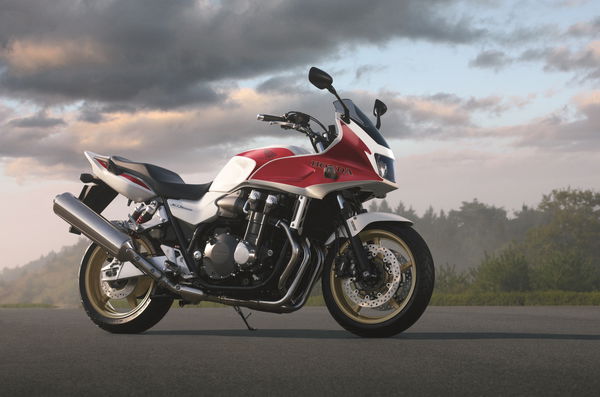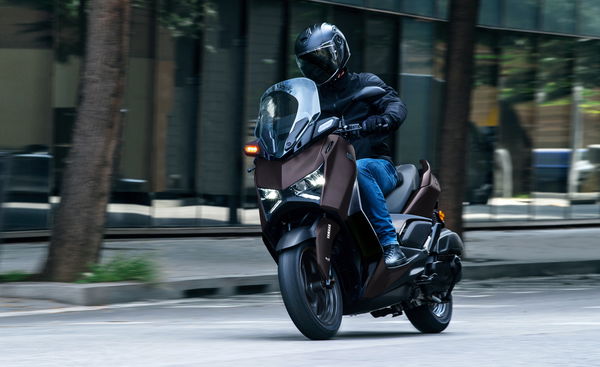Off-road or off track? | 5 ground-breaking ADV Motorcycles... and 5 that sunk
Adventure motorcycles have come a long way over the decades - literally - but while some have forged new paths, there are others that didn't get far at all
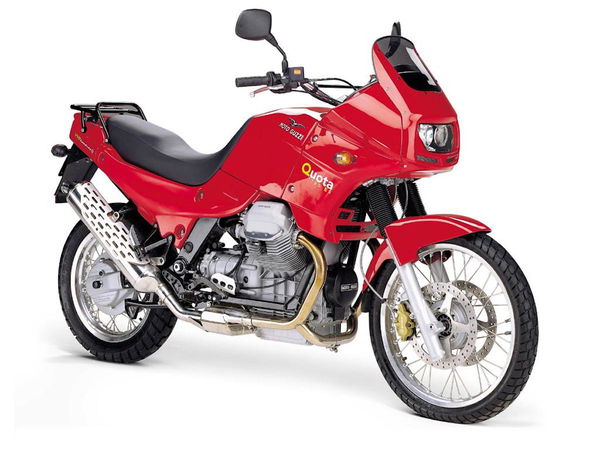
The humble motorcycle has come a long way since the notion of combining an engine and two wheels for transport was born… so far in fact that mere roads couldn’t hold them for long.
Indeed, the Adventure motorcycle - or ADV to close friends - has grown to become one of the most lucrative segments of the motorcycle market, its popularity sparked by models cutting their teeth on the gruelling sands of the Paris-Dakar Rally in the 1980s.
While some are built for hardcore off-roading, others blended in with some touring practicality and sizes ranging from 125cc right up to 1200cc-plus, an adventure motorcycle is a must for most manufacturers.
Not that it is an easy market to crack. Indeed, while there have been some notable Adventure pioneers venturing onto the scene over the past four decades, there have been some notable flops that were not destined to go far.
But which were the best – and worst – of the bunch. Here’s our pick of the five most pioneering adventure bikes… and five which never should have left the drawing board!
5 Adventure Motorcycle that blazed a trail
BMW R80G/S [1980]
It’s well-known that BMW’s original adventure motorcycle, the ‘Gelande/Strasse’ (off-road/road) R80 was a true pioneer for both the brand and the marketplace.
The first big-bore, twin cylinder adventure tourer that actually performed off-road, introduced BMW’s single-side Monoloever rear suspension, cleverly used plastic panels to reduce weight and was so popular that it quickly became BMW’s best-selling bike.
Perhaps the most significant mark of the R80G/S is that it heralded the GS lineage, a range that would go on to spawn numerous variations and establish itself among the top selling motorcycles across Europe year-upon-year.
Ironically, the R80G/S was originally intended as something of a stop-gap, parts-bin model to keep BMW Motorrad afloat until the K-series came on stream. Despite a lukewarm reception, it forged its reputation on the demanding dunes of the Paris-Dakar Rally, which earned BMW its first win in 1981 before triumphing again in 1983, 1984 and 1985.
Success brought notoriety and prestige, thus kick-starting the big-bore, ‘Dakar replica’ market that endures to this day even BMW has has long since vacated the class.
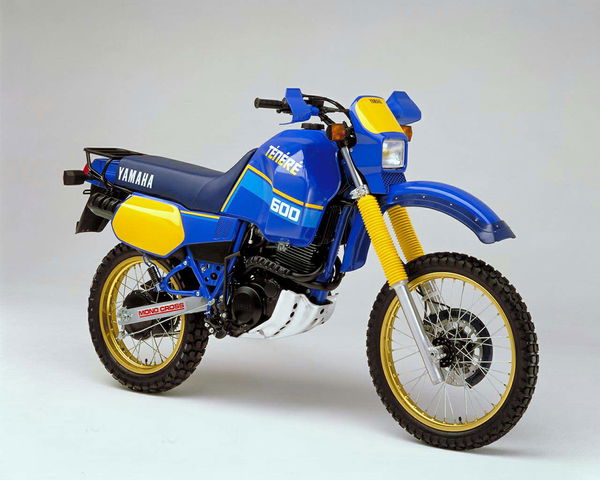
Yamaha XT600Z Ténéré [1983]
While BMW’s R80G/S went on to dominate the Dakar Rally, it didn’t inspire the first ‘Paris-Dakar replica’. That honour goes to the Yamaha XT600Z.
Before the big BM twin arrived, the first two Paris-Dakar Rally raids in 1979 and 1980 were won by modified, big-tanked versions of Yamaha’s XT500 single, then the biggest ‘trailie’ around.
It prompted Yamaha to develop a road going version, the Yamaha XT600Z in 1983. And, with an enlarged engine producing 46bhp, long travel suspension, massive 30-litre fuel tank, front disc brake, small headlamp cowling, striking race replica white/red or blue/yellow livery and even a new name (the Sahara dialect for ‘desert’) it was a big hit for the marque.
The spirit of the original Tenere lives on in the modern day Yamaha Tenere 700, a model that punches well above its weight in the rough just like its inspiration.
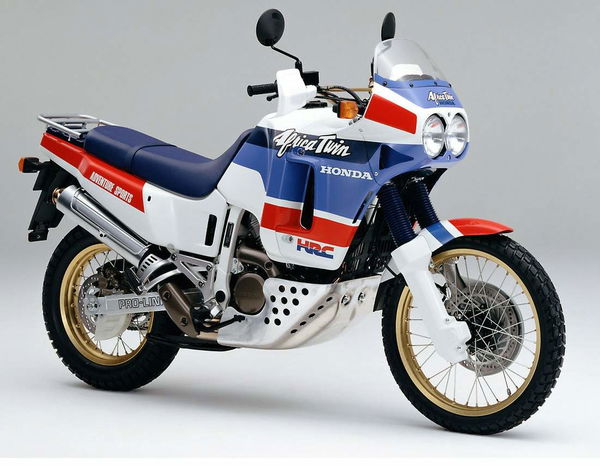
Honda XRV650 Africa Twin [1988]
Although Honda were fairly slow to capitalise on making the most of its initial success on the Paris-Dakar Rally - save for the replica of the 1982 ever winning Honda XL250 - when it did hit the jackpot, he won big both on and off-road.
The Honda NXR750 was the dominant bike of the late-80s, winning the Paris-Dakar on four occasions and heralded the launch of the first Africa Twin.
Conceived as a road going replica of the Dakar-winning racer, the XRV650 was based around an enlarged Transalp V-twin motor, was built by no less than HRC, bristled with neat details such as Dzus fasteners and a suede texture seat and, with its race-replica red/white/blue livery more than looked the part, too.
In effect, it was a ‘desert RC30’. Unfortunately, it was never officially imported into the UK, so remains rare, but the 650 paved the way for the XRV750 Africa Twin which followed and which dominated this pre-adventure bike class up to the mid-1990s.

BMW R 1150 GS Adventure [2002]
The machine with which Adventure category is perhaps best associated with, the BMW R1150 GS Adventure has become a go-to for those who prefer to get their boots muddy on the weekend.
Based on the BMW R1150 GS, the Adventure spin-off gained the usual mix of longer travel suspension, off-road wheels/tyres and big tank to make it as adept going far off road as it was on road.
And, as has fallen into motorcycling folklore, after then being used in Charley and Ewan’s TV ‘The long Way Round’ infamously over KTM, the GS Adventure became so popular it acted as catalyst for the whole modern adventure bike class.
It wasn’t BMW’s first foray into the mud but the GS Adventure moved things along with its blend of image, premium touches and, well, a true sense of adventure finding favour with buyers.
![Ducati Multistrada 1200 S [2010]](https://cdn.visordown.com/DUCATI-Multistrada-1200S-11898_7.jpg?width=600)
Ducati Multistrada 1200 S [2010]
If anything, the Ducati Multistrada is perhaps the most significant motorcycle to have emerged from the gates of Borgo Panigale’s finest, Ducati.
A brand synonymous for sportsbikes and delectable exotica, the Multistrada was a sure sign that Ducati needed to move with the times and furrow new paths. Alas, its quirky-looking first effort didn’t quite hit the spot but by the time the Ducati Multistrada 1200 S hit the trails in 2010, it brought with it a wealth of new tech to the party.
The bike that introduced fully-integrated riding ‘modes’, not only for engine performance maps but also traction control and ABS settings and, most tellingly of all, suspension settings, too, the Multistrada S simply redefined what we thought of adventure style versatility through the most sophisticated and well thought out electronics yet.
The fact that it wasn’t really an off-roader didn’t matter. Today everyone – KTM, BMW, Triumph even Harley-Davidson – is doing it but the breakthrough came with the MTS1200S.
5 Adventure Motorcycles lost in the wilderness
![Honda XLV750R [1983]](https://cdn.visordown.com/Honda%20XLV750R%20%201.jpg?width=600)
Honda XLV750R [1983]
Honda are renown for being so technically ambitious they’re not scared of occasionally getting it wrong. For every RC30 there’s a VF750S, too. For every Gold Wing there’s a Pacific Coast and for every DCT gearbox there’s an inboard disc brake.
So it’s probably not surprising that Big H’s first stab at a ‘Dakar Replica’ adventure bike was almost brilliant, but ultimately flawed. As Honda’s first ‘dual sport’ bike it was internally designated the RD01 (the NX650 Dominator was the RD02, and 650 and 750 Africa Twins, RD03 and RD04 respectively) and with an air-cooled V-twin producing a respectable 61bhp, shaft drive and a big 19.5-litre tank it should have had the beating of the 50bhp BMW R80G/S.
Unfortunately, however, the XLV also proved top heavy and prone to catastrophic gearbox problems, so much so that it was withdrawn from sale in 1986 with under 10,000 built.
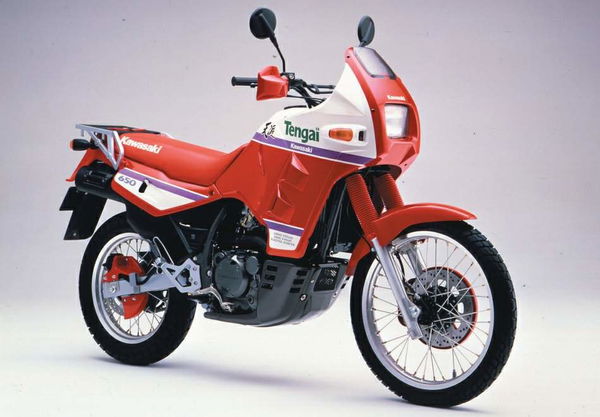
Kawasaki Tengai [1989]
Of all the ‘Big Four’ Japanese manufacturers, Kawasaki has never quite ‘got’ the whole adventure bike thing. Its short-lived, early-Noughties KLV1000 may have been a solid effort, but was actually a rebadged DL1000 V-Strom made by Suzuki and its current four-cylinder Versys 1000, while an able tourer, is actually a Z1000SX ‘on stilts’ with about as much off-road ability as a Gold Wing.
But its original 1980s effort, although not a success, almost got it right. The 1987 KLR650 Tengai was based on the KLR650 trail bike but with a bigger 24-litre tank, frame-mounted fairing and actually shorter-travel suspension.
The result, however, didn’t really work. As a 650 single it wasn’t much good on road compared to bigger twins and as an off-roader, being heavier and with shorter travel suspension, it was worse than the KLR. Unsurprisingly it only lasted two years before quietly being left in the woods.
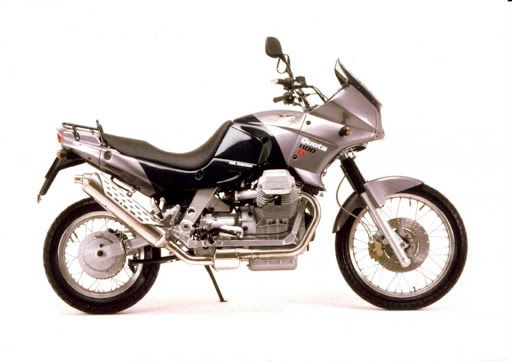
Moto Guzzi Quota 1000 [1992]
While Kawasaki may have the least illustrious adventure bike history when it comes to the Japanese marques, surely when it comes to the European ones, the least likely adventure bike manufacturer or all has to be Moto Guzzi.
In truth, Italy’s ‘Grand Dame’ has given the category a good go, and it’s not hard to see why. With its BMW-alike transverse V-twin, shaft drive powertrain this was Moto Guzzi attempting to come up with an ‘Italian BMW GS’.
Unfortunately, Moto Guzzi didn’t hit the mark, with the original 1989 Quota 1000, with just 69bhp but weighing well over 300kg, a seat height approaching 900mm and with Guzzi build quality of the time pretty shambolic, added up to a crude, heavy, ungainly and unreliable hound that you’d be unlikely to take touring and never want to take off road.
The subsequent 1100 wasn’t much better, nor the (much) later Stelvio.
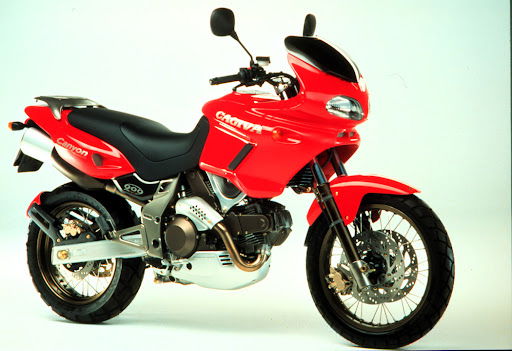
Cagiva Gran Canyon [1998]
When it comes to adventure or Paris-Dakar replica bikes, now defunct Italian brand Cagiva did, briefly do some things brilliantly.
It actually won the race not once, but twice, in 1990 and 1994 with its Ducati-powered Elefant 900 and its road-going replica was great looking (especially in Lucky Strike livery), characterful and capable. But that was about it.
The 1998-2002 Gran Canyon, still Ducati Powered, was neither a great tourer or off-roader, falling somewhere in between while the succeeding 2000 Cagiva Navigator.
An Italian TDM but without the style, charisma or reliability of its inspiration. Ultimately, of course, Cagiva was more about its misses than its successes and its adventure bikes included some of its biggest misses of all.
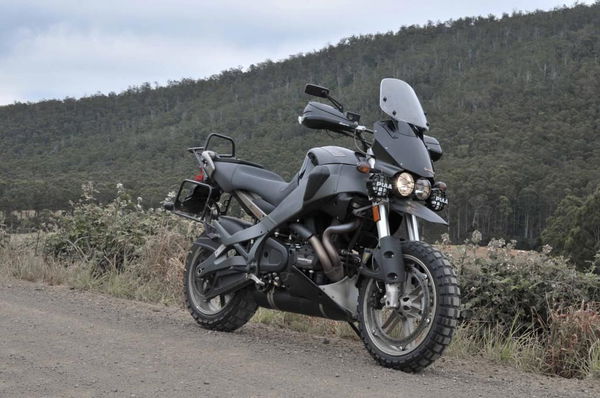
Buell XB12X Ulysses [2006]
Perhaps the motorcycling equivalent of the softest soft-roader out there, the Buell Ulysses was pitched as an adventure motorcycle, but you’d be brave for trying to go too far.
Until this year’s arrival of Harley adventure bike, the Pan America, no adventure bike was more unlikely than Buell’s widely ridiculed Ulysses, so much so it became commonly known as the ‘Useless-ly’ – and with good reason.
The idea: take one fairly archaic cruiser engine, Buell’s retuned version of the Harley Sportster 1200 lump, fit it in Buell’s sports bike aluminium twin spar frame, retain Buell’s off-road inappropriate belt drive and rim-mounted front disc, whack on a semblance of adventure bike styling and try to get away with it as a genuine adventure bike.
It didn’t work. In truth, in isolation, the Ulysses wasn’t a bad bike, it’s just that it wasn’t remotely a credible adventure one. It was heavy and crude, flailed in the mud, quality wasn’t great, foot pegs snapped if you went over a jump and it was fairly slow, basic and pricey, too.
Why anyone would buy one was a mystery. No, correct that, no it wasn’t: nobody did.
